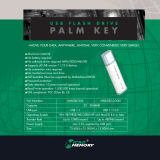
Contents
Chapter 1. About this manual .....1
Important Safety Information .........1
Chapter 2. General Checkout......3
Chapter 3. General information .....5
Features ................5
Specifications ..............7
Available options .............8
Chapter 4. Diagnostics........9
IBM Setup Utility program .........9
Product Recovery Program menu .......11
Diagnostics ..............12
Diagnostics program download.......12
Navigating through the diagnostics programs . . 12
Running diagnostics tests.........12
Test selection .............12
Test results .............13
Fixed disk advanced test (FDAT) ......13
Quick and Full erase - hard drive ......15
Viewing the test log ..........16
Chapter 5. Installing Options .....17
Installing external options .........17
Locating controls and connectors on the front of
the computer .............17
Locating connectors on the rear of the computer 18
Obtaining device drivers .........18
Removing the cover ..........19
Removing the bezel ..........20
Locating components ..........21
Accessing system board components and drives 22
Identifying parts on the system board ....23
Installing memory ...........24
Installing PCI adapters .........25
Installing a drive in the disk drive tray ....26
Installing a cable lock ..........28
Changing the battery ..........29
Erasing a lost or forgotten password (clearing
CMOS) ...............30
Replacing the cover and connecting the cables. . 30
Chapter 6. FRU Removals ......33
Removing the retention bar and PCI riser card . . 33
Replacing a microprocessor .........33
System board..............34
Power supply .............34
Chapter 7. Symptom-to-FRU Index . . . 37
Hard disk drive boot error .........37
Power Supply Errors ...........37
Diagnostic error codes ...........39
Beep symptoms .............57
No-beep symptoms............59
POST error codes ............60
Miscellaneous error messages ........75
Undetermined problems ..........77
Chapter 8. Parts listing........79
Chapter 9. Additional Service
Information ............103
Security features ............103
Passwords .............103
Vital product data ...........104
Desktop Management Interface (DMI) ....104
Alert on LAN ............104
BIOS levels ..............104
Flash (BIOS/VPD) update procedure .....105
Flash recovery boot block jumper.......105
Power management ...........107
Automatic configuration and power interface
(ACPI) BIOS.............107
Advanced Power Management ......107
Automatic Hardware Power Management
features ..............107
Automatic Power-On features .......107
Chapter 10. Related service
information ............109
Safety information............109
General safety ............109
Electrical safety............110
Safety inspection guide .........111
Handling electrostatic discharge-sensitive
devices ..............112
Grounding requirements.........113
Safety notices (multi-lingual translations) . . . 113
Send us your comments! .........142
Problem determination tips.........143
Notices ...............143
Trademarks ..............144
© Copyright IBM Corp. 2001 iii





















